Two years ago, I showed a young black pine at Bay Island Bonsai’s 13th annual exhibit.
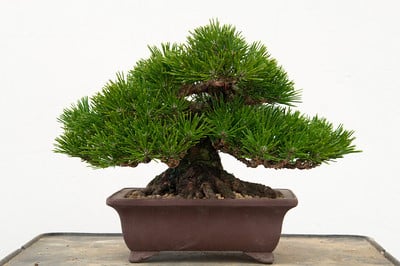
Shohin black pine – January 2012
The tree has continued to develop, so I thought I’d show it again at BIB’s 15th annual exhibit. Here’s what the tree looked like last week.
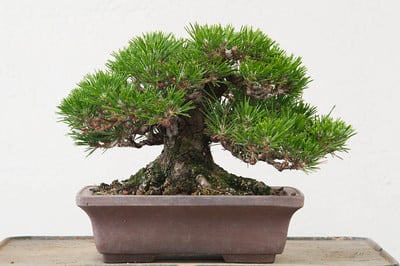
January 2014
I brought the tree to a BIB workshop to see if it had a chance of cleaning up enough to be shown. As most of the branches had been wired in spring (see “Decandling a shohin black pine”) the main task was bending the branches into place. Here’s what the tree looked like after setting the first branch.
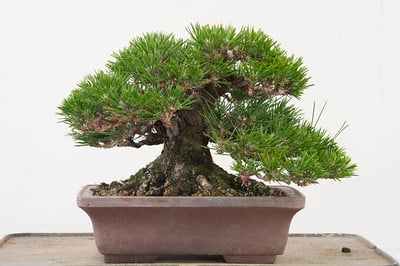
After setting the first branch
Altogether I might have added half a dozen wires and plucked a small number of downward facing needles. I’ll trim the longer needles – those from shoots that weren’t decandled in spring – just before the show. Here’s the tree after wiring.
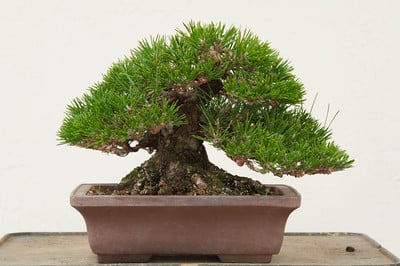
After wiring – 6.5″ (Pot #1)
I’m sure you can guess what comes next – pot selection. Here are the candidates, starting with the pot it was shown in two years ago.
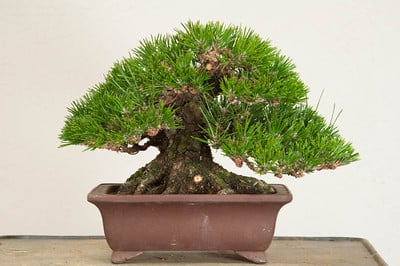
Pot #2
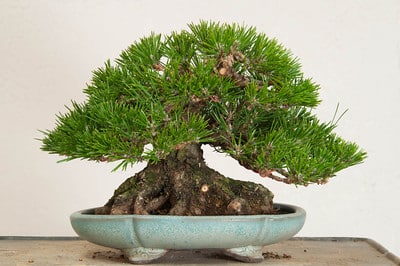
Pot #3
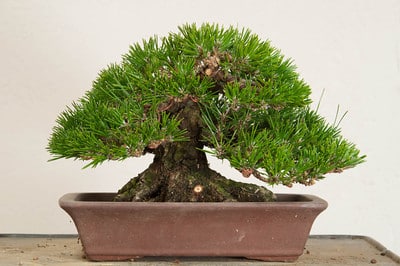
Pot #4
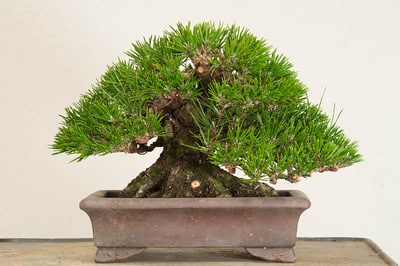
Pot #5
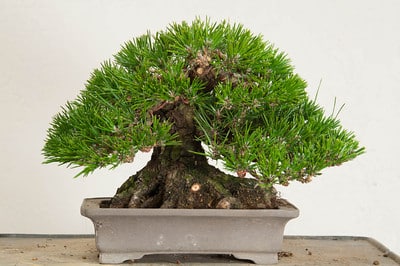
Pot #6
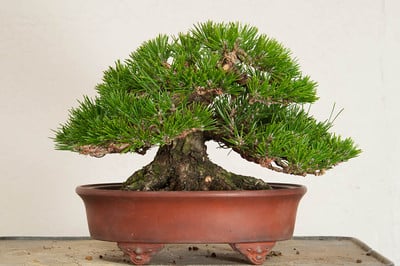
Pot #7
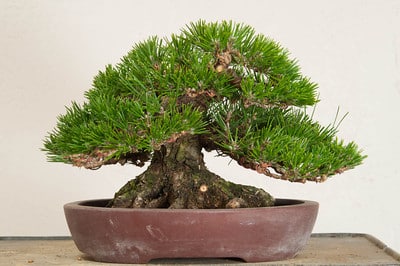
Pot #8
Picked your favorite? Here’s mine.
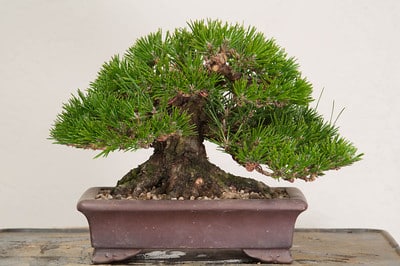
After repotting – Pot #5
Some of the pots were too big (4 and 8) and some too small for the roots (3 and 6). Of those that fit well, I opted for #5, a shinto – Chinese – pot that’s maybe 30-40 years old. With some last minute clean-up, moss to cover the soil and some walnut oil for the pot, I’ll be all ready to go.
For anyone who hasn’t heard, Bay Island Bonsai’s 15th Annual Exhibit featuring trees that were born in the USA is coming up on January 18-19 in Oakland, CA. See Bay Island Bonsai for details.
Subscribe to Bonsai Tonight
New Posts Delivered Every Tuesday and Friday
Dave says
WOW Jonas! That tree looks better and better every time I see it. Great pot also!
Graeme Preston says
Hi Jonas. Question about styling, especially shohin pines: in what cases might you consider reducing the foliage mass in order to reveal more of the tree’s structure? I just noticed above that when you positioned and wired the main branch (pictures 2 and 3) that the actual branch itself is obstructed by the foliage mass it’s carrying. From the pictures it looks like it would be possible to reveal some of that structure by removing some of the obstructing foliage. Would it ever be worth it to do that? When balancing a full, compact foliage mass and an optimally exposed branch/trunk structure, especially in significantly small conifers where needle reduction is so important (i.e. shohin black pine) when, if ever, is it worth it to compromise one for the other? Thanks.
Mac says
Jonas, Please post photo of finished tree for display with the pot oiled and mossed. I’d really enjoy seeing it. The pot selected would have been my choice as well. Honest, I chose before reading what you chose.
I have been using walnut oil on pots as well, don’t remember where I found out it was suitable. Do you have any opinions about it as opposed to camila oil or mineral oil?
Patrick says
Awesome improvement from jan 2012 to current. The subtle(but definitive) movement made all the difference for me. Not so sure in 2012, but it is clear now! Tree looks great, but why remove that root in the front before the show? Was it crisscrossing or something of that nature? I find that fresh wound at the nebari sort of distracting.
I second wanting to see the tree all dressed up for the show!
Chad says
Pot 7 mate looks the best to me
Jonas Dupuich says
@Patrick – thanks for the note. I removed the root as it emerged above a larger root. The idea is that removing it will make the roots and base of the trunk look larger. I’ll try to camouflage the spot when I finish prepping the tree. (I’ll make pics at the exhibit.)
@Mac – Different people use different oils on their pots and stands. I tend to avoid mineral oils and use the oil from squashed walnuts for pots. I don’t recall the best use for camelia, enoki and other natural oils. Ill post an update if I get better information about this.
@Graeme – very good question. I don’t always find it easy to get the foliage where I want it while showing off the branch structure at its best. In general, I think the silhouette here is a bit larger than I’d like it to be considering the size of the trunk, but I don’t have great branches to cut back to. I figured I’d show the tree as is, make some more cuts after the exhibit, and continue to aim towards making a more compact tree. Ideally I’d show more trunk and branch structure within a smaller overall silhouette. Thanks for asking about this!
Graeme Preston says
Training shohin black pine must feel like spinning plates sometimes. From the pictures above, it looks the the tree was repotted at a slightly different angle? I fee like I can see the junction of the main branch and the trunk better, which makes the foliage mass seem more connected the the tree. Visually I think the whole image is more integrated, and more powerful. Does that make sense? I also wish pot #8 was a little smaller, and maybe had slightly bigger feet. Thanks Jonas, good luck.
Jonas Dupuich says
Thanks Graeme – you noticed. Tilting and turning the tree just a bit can make a big difference. I think my favorite front is actually a bit to the right of where it is now, but it’s better than before. And yes, a slightly smaller pot 8 would be a good choice.
Jonas
vonsgardens says
Nice job Jonas! This tree gets better Every time I see it. Marvellous work, the pot you picked makes sense!